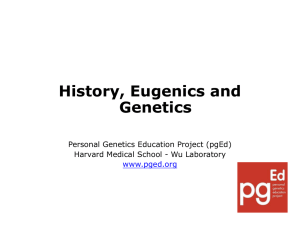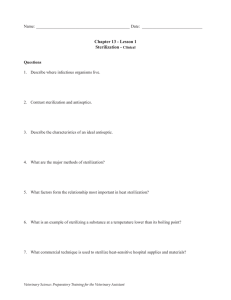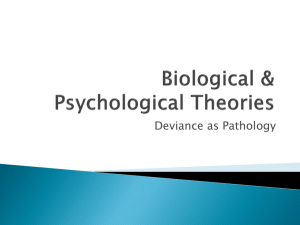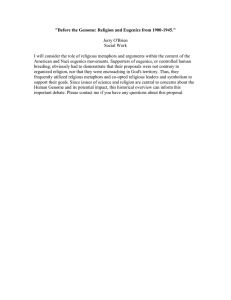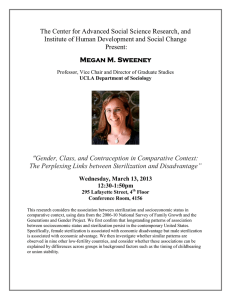"Eugenic" Sterilizations in the United States in the 20th
advertisement
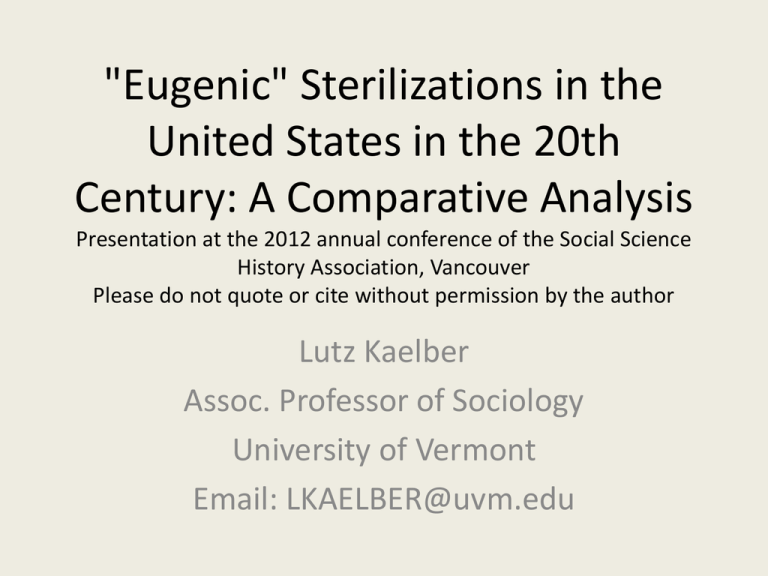
"Eugenic" Sterilizations in the United States in the 20th Century: A Comparative Analysis Presentation at the 2012 annual conference of the Social Science History Association, Vancouver Please do not quote or cite without permission by the author Lutz Kaelber Assoc. Professor of Sociology University of Vermont Email: LKAELBER@uvm.edu “Eugenically” motivated family studies ca. 1875 – ca. 1925 Biological – eugenic model of intergenerational transmission of disability and deviance “Positive Eugenics” here: winner, “fitter families” contest 1925 Illnesses, “defects” Worth based on eugenic score of father, mother, children Period Total Disproportionately targeted Law Compulsion Reach Text of the law Adjudication Denunciation by general public (information to commence sterilization proceedings) Authorities’ access to medical and other records of kin groups U.S. (and Canada) 1907-late 1970s 70,000+ (3,000) Disabled; also disenfranchised, poor, women, minorities State Typically formally voluntary (required formal consent) Mostly only institutionalized (in a few cases, “extra mural”) Varied across states; basic elements similar Typically eugenics boards; proceedings public; victims could challenge in civil court No Could be extensive Nazi Germany 1934-1945 350,000 (= approx. 1% of adult population of childbearing age) Same Federal Compulsory Everyone Similar to H. Laughlin’s model sterilization law Special “hereditary health courts”; nonpublic; appeal only to superior health courts Yes Extensive CA Eugenics sterilizations in California and Minnesota Virginia per period Iowa, Georgia, North Carolina % female victims % mentally % ill intellectually disabled total victims per year/ 100,000 pop. in peak period National 61% 44% 52% Est. 70,000+ CA 49% 58% 37% 20,000 13 MN 78% 18% 82% 2,300 5 VA 61% 49% 48% 7,300 13 IA 71% 44% 50% 1,910 6 GA 55% 77% 22% 3,200 9 NC 83% 25% 70% 6,300 7 sterilization period (length of time) 1907earl.1980s (75 years) 1909-60s (55 years) 1925earl.1960s (35 years) 1924-1979s (50 years) 1915earl.1960s (35 years) 1937-1963 (25 years) 1929-1974 (45 years) http://www.uvm.edu/~lkaelber/eugenics/CA/CA.html Number of victims Temporal pattern of sterilizations Passage of Laws / Groups identified in the law / process of the law Precipitating factors and processes Groups targeted and victimized Other restrictions on targeted populations Major proponents of eugenics “Feeder institutions” and institutions where sterilizations were performed Opposition Commemoration Bibliography NC % female victims % mentally ill % intellectually disabled 83% 25% 70% NC targeted “black welfare queens” in 1950s and 1960s; sterilization law had “extra-mural” component and allowed sterilization of populations not in state institutions % female victims MN 78% % mentally ill 18% % intellectually disabled 82% MN: strength of social progressivism with a focus on ‘helping’ intellectually disabled females; sterilization of insane required at least 6 months of continuous institutionalization and consent by individual and next of kin Memorialization of events and commemoration of victims Inscribed memory Incorporated memory


